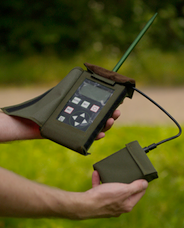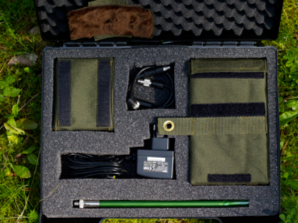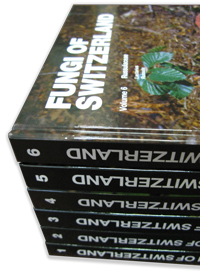“Putting the spotlight on some hard-to-see warblers”
Keith Betton, chairman of the African Bird Club, shares his thoughts on the recently published Helm Identification Guide to Reed and Bush Warblers.
“In size and feel, this book is closest to the Helm volume on Sylvia Warblers, and similarly it is also an impressive tour de force. At the outset the authors deserve praise for tackling such a challenging group of genera which contain some of the most secretive species in the world! The families covered are Locustellidae, Acrocephalidae and Cettiidae – 112 species in 13 genera, of which 21 are on the British List.
The 42 colour plates by Brian Small are grouped together at the front of the book. These really are excellent, with usually just one or two species per page and a selection of distinctive races being shown with brief descriptions on the facing pages. The main species texts are really comprehensive, giving detailed accounts of structure and plumage and comparisons with similar species. Vocalisations are described and sonograms are shown, although – rather like the text – they are a bit on the small side! In contrast the colour distribution maps are superb – being large and clearly annotated to show the ranges of each race for both breeding and winter distribution. These ranges are also described, as are the choice of habitats. Movements, breeding habits, behaviour and moult are all treated in separate sections, as are in-hand measurements, which are also accompanied by diagrams of the wing formulae. A section on taxonomy and systematics allows for an explanation of recent changes. In my view it would have been helpful to include here the various names that readers may encounter when reading about the species elsewhere. Good colour photographs are included for all but the most obscure species, and helpfully these are positioned at the end of each species text. No detail has been spared in presenting information. The various appendices give information about the type localities and synonyms for each species, as well as body measurements based on fieldwork and museum specimens.
In creating this book the authors have taken advantage of molecular analysis based on DNA comparisons. These studies have turned some of our understandings upside down. For example, research strongly suggests that two accepted races of Aberrant Bush Warbler are in fact races of Sunda Bush Warbler. Also who would have thought that Grasshopper and Lanceolated Warblers were not closely related? It appears that that they are seated in different clades, and Grasshopper Warbler is actually more closely related to Chinese Bush Warbler – and therefore is likely to be a Bradypterus and not a Locustella!
A number of these taxonomic issues are discussed in the introductory chapters. The authors have adopted a pragmatic approach and have been flexible in deciding the scope of the book to ensure the inclusion of the most challenging genera. Among their decisions is the adoption of Iduna as a sister genus to Acrocephalus for four species usually accepted as being in the genus Hippolais (Eastern and Western, Sykes’s and Booted Warblers), while Thick-billed Warbler is put in the genus Phragamaticola. Similarly Chestnut-headed Tesia is on its own in the genus Oligura. The recent splitting up of Spotted Bush-Warbler is only partly followed, with the authors recognising the creation of Baikal Bush-Warbler (Bradypterus davidi), but not West Himalayan Bush Warbler (Bradypterus kashmirensis). Similarly Anjouan Brush-Warbler (Nesillas longicaudata) is lumped into Madagascar Brush-Warbler.
When it comes to the use of English names, the choice stays fairly close to the IOC List, although occasionally the Clements name is favoured instead, and on some occasions the authors have adopted names that are used by neither – such as Kinabalu Bush-Warbler (for Bradypterus accentor) and Kiritimati Warbler (for Acrocephalus aequinoctialis). One species that followers of Clements will find missing is Victorin’s Scrub-Warbler. Although treated as a Bradypterus in that list, it has been renamed as Victorin’s Warbler by IOC and placed in the genus Cryptillas next to the Crombecs and Longbills in the family Macrosphenidae. Those who are interested in the choice of races will again have plenty to discuss – although space does not allow details to be listed here.
It would be a mistake to think that there is little left to learn about these Old World families. For example, how did we overlook the Large-billed Reed Warbler? Identified from a single specimen collected from India in 1865, it was 140 years before it was detected again – and yet since 2006 three have been trapped in Thailand. Similarly Timor Bush Warbler was described from two specimens collected in 1932, and then not seen again. But just a year ago it was rediscovered in good numbers, while nearby on the island of Alor this or perhaps another species has now been discovered. Recognising that the relationships between the species in this book will probably change before a second edition is printed, the authors have wisely included an appendix which summarises some of the likely revisions likely to result from recent research. For example Little Rush Warbler and Evergreen Forest Warbler are both likely to be split into several new species, while Javan Bush Warbler and Russ et Bush Warbler may be lumped, as may also Styan’s Grasshopper Warbler and Middendorff’s Grasshopper Warbler.
An amazing amount of work has gone into this volume, and it certainly gets my personal “book of the year” award.”
Share your views with NHBS customers around the world – click here to create a product review.
Your review will be posted in the ‘Reviews/Write a review’ tab on the product page and may feature here on the Hoopoe








 How many monographic series are there in the NHBS catalogue?
How many monographic series are there in the NHBS catalogue?


